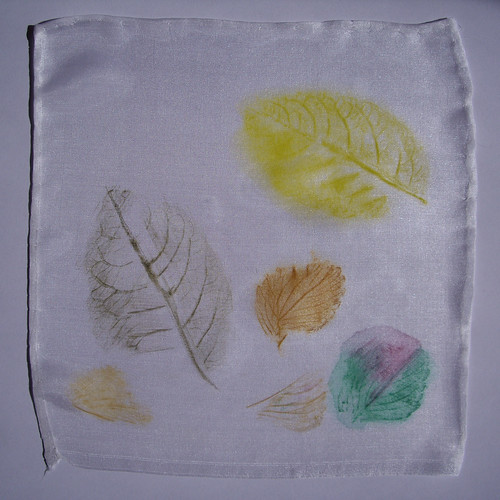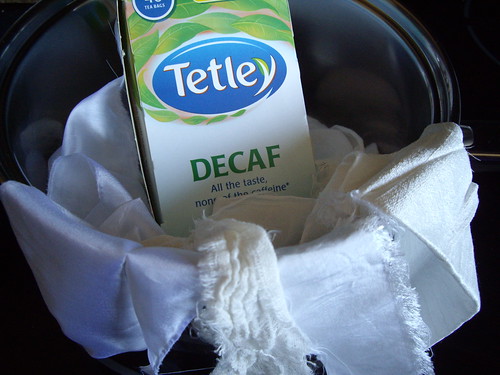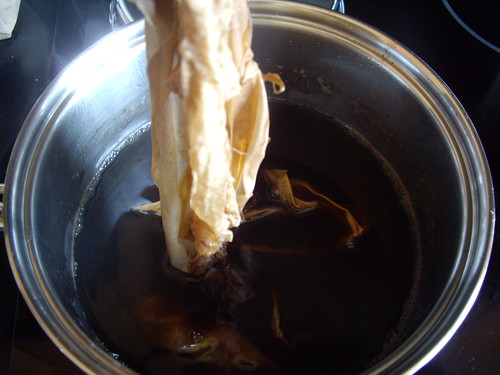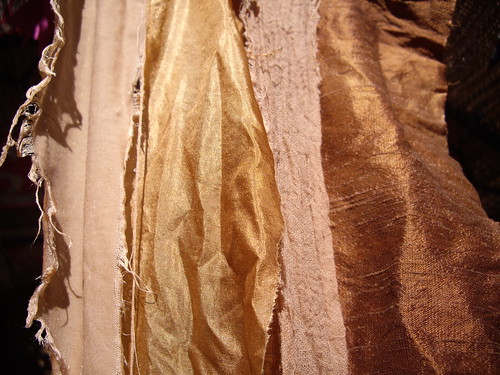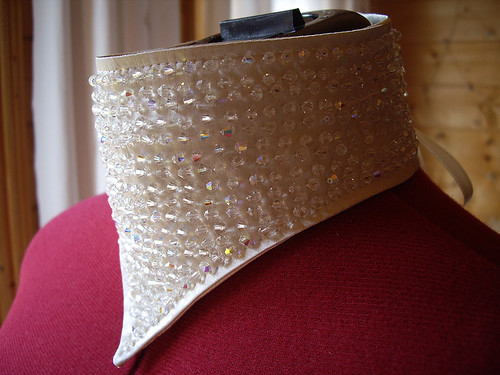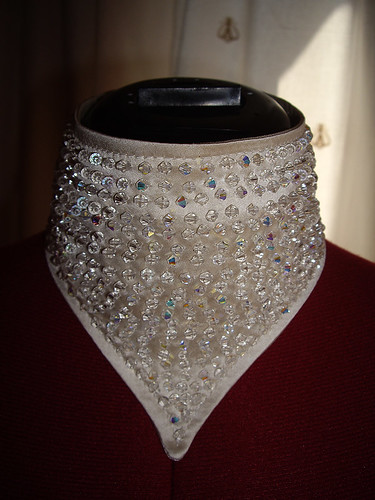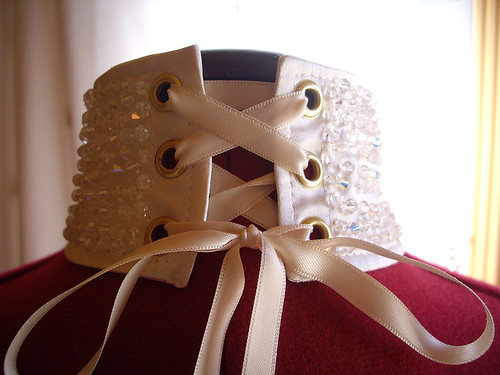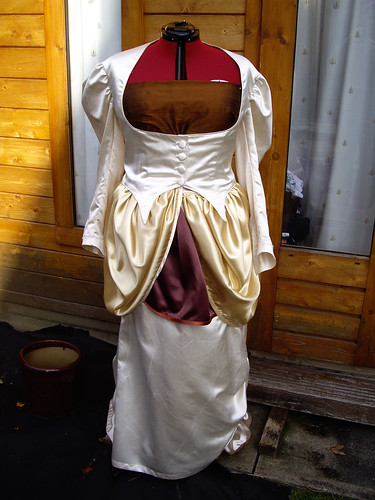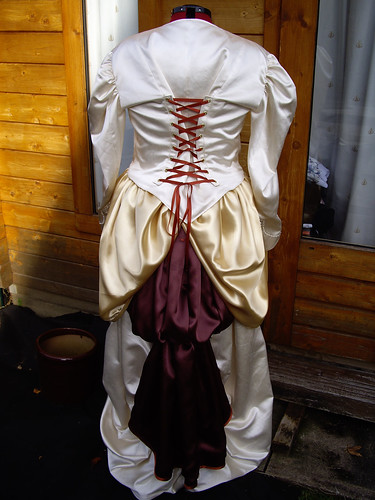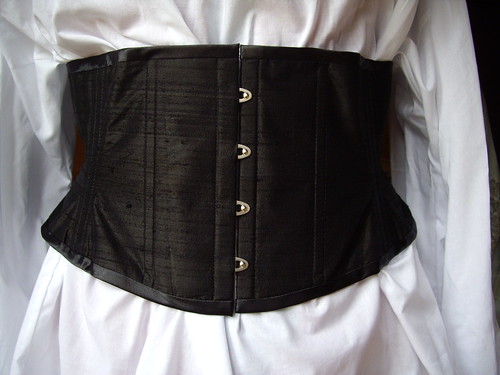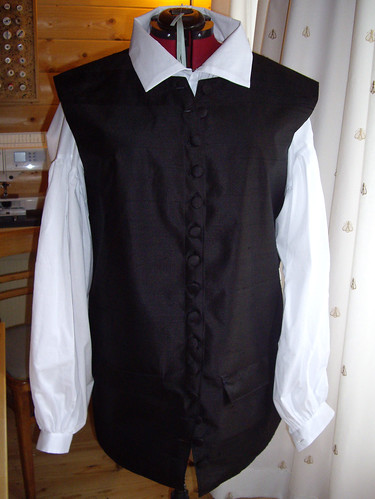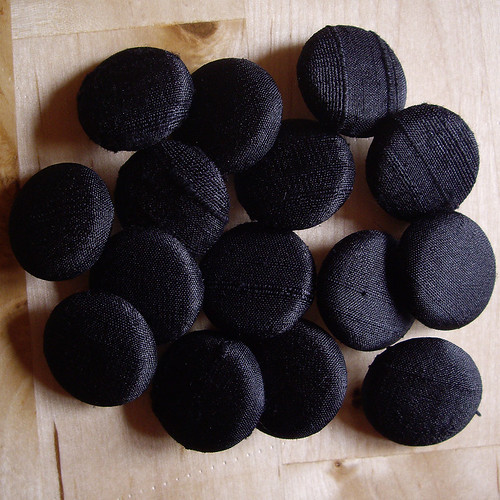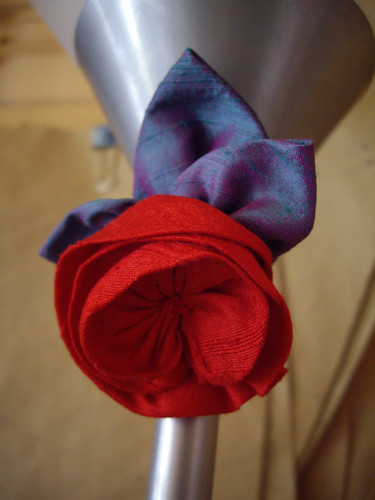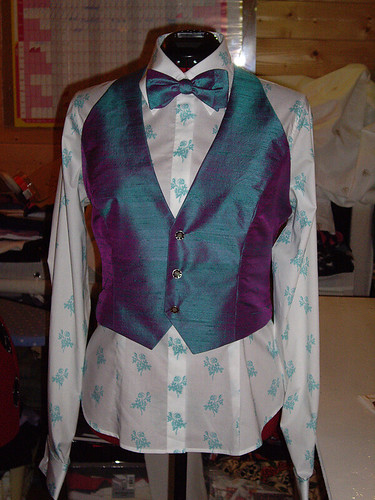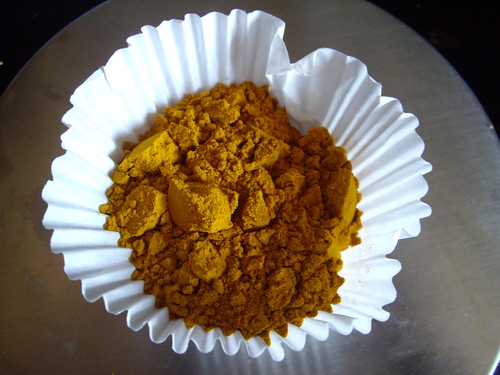
It seems as though I’ve been bitten by the dyeing bug rather badly. I can’t stop thinking about plants I could grow in my garden (coreopsis, safflower, weld, marigolds), or plants I could forage (walnuts, elderberries, sumac), or plants I could ask friends-and-relations to save for me (onion skins, rhubarb leaves).
I’m still working in the kitchen without mordants, so the next obvious step was turmeric. A quick trip to the corner shop procured a nice big bag of spice, and I found these instructions online. I used them as more of a guideline than a rule, as I don’t have a thermometer, and I don’t have any coffee filters to strain out the turmeric powder.
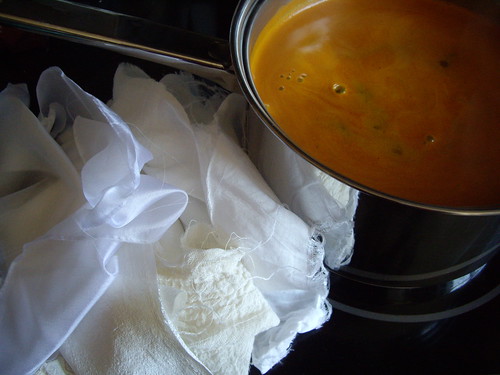
I cut slightly larger pieces of fabric this time, with a total dry weight of 30g. I used 25g of turmeric powder, and the water looked extremely yellow! As before, all the fabric’s been pre-treated by a quick trip through a hot wash, and it was all dampened under the hot tap before putting it in with the turmeric.

Left to right: silk paj, silk dupion, bamboo, cotton muslin
The fabrics started to take up the colour immediately, a beautiful rich yellow. Apparently you can modify this to red with the addition of baking soda, but I wanted to see what colour the pure turmeric would result in first.
As before, I simmered the turmeric for an hour, then added the fabric and simmered for another hour. Finally the heat was turned off and the water left to cool before rinsing the turmeric out of the fabric. I could probably have kept the dye and used it again to create a paler colour – or perhaps tried to modify it the second time around.
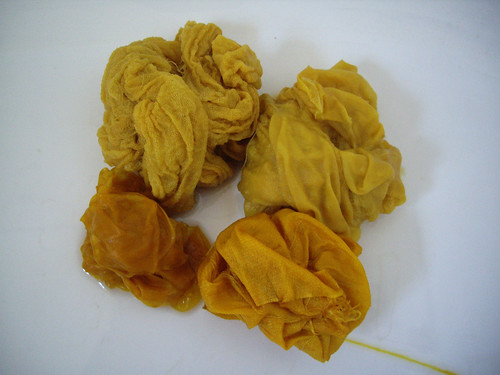
An awful lot of colour leached out of the fabrics as I was rinsing them, particularly the cotton and bamboo, but I was still left with nice bright colours.

Cotton muslin, silk paj, bamboo, silk dupion
I hung them out on the washing line to dry, loving the fantastically bright yellows, but bearing in mind the warning that turmeric isn’t terribly light fast as a dye. How bad could it be though, really?
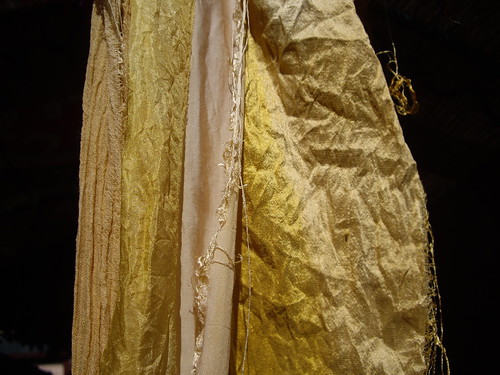
An hour and a half later, I had my answer! You can see the colour change most clearly in the silk dupion (on the right), which has a stripe down it where it was covered by the bamboo as it dried. As a friend pointed out, when you want to shift a turmeric stain it seems to stay for ever, so perhaps the answer is to leave the stained garment out in the sun for a bit…
The colours are still lovely, if nowhere near as bright as they were to begin with. This photosensitivity does limit what I can do with the finished fabric though. I don’t want to go out on a summer day wearing a bright yellow scarf, and come home wearing a white one!
Like this:
Like Loading...

